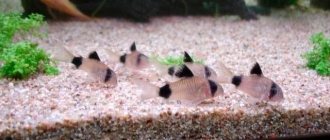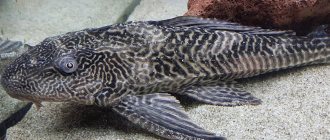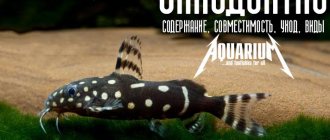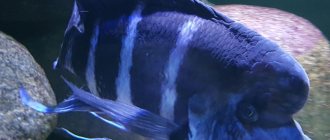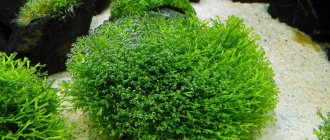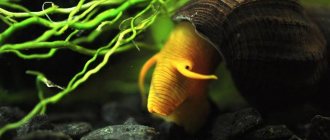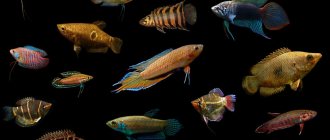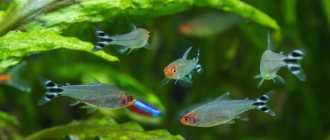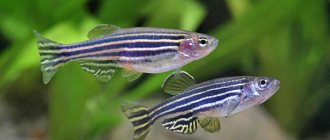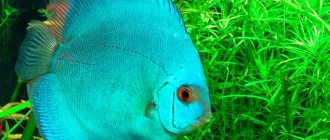The golden catfish or bronze catfish (lat. Corydoras aeneus, also the bronze catfish) is a small and beautiful aquarium fish that comes from the family of armored catfish (Callichthyidae). The family got its name because their body is covered with protective bone plates.
Distinguished by their livability, interesting behavior, small size and beautiful coloring, Corydoras are well suited for experienced and novice aquarists. And the golden catfish is no exception; you will learn further how to keep, feed and breed it.
Habitat in nature
The golden catfish was originally described as Hoplosoma aeneum by Theodore Gill in 1858. They live in South America, on the eastern side of the Andes, from Colombia and Trinidad to the Rio de la Plata basin.
They prefer quiet, calm places with a soft substrate at the bottom, but they can also live on currents. In nature, they live in water with temperatures ranging from 25 °C to 28 °C, pH 6.0–8.0, and hardness ranging from 5 to 19 DGH.
They feed on various insects and their larvae. They gather in schools of 20-30 individuals, but can also form schools of hundreds of fish.
Like most Corydoras, the Bronze has a unique method of obtaining oxygen for breathing from the atmosphere. They breathe through gills, like most ordinary fish, but periodically suddenly rise to the surface of the water for a breath of air. The oxygen obtained in this way is absorbed through the intestinal walls and allows it to survive in water that is unsuitable for life for ordinary fish.
Mr. Tail Recommends: Aquarium Basics
Bronze catfish is a schooling fish; it is recommended to take a group of at least 6 individuals. The tank is selected at the rate of 10 liters per pet. This species rests and feeds in shallow water, so it is better to take a low aquarium with a large bottom area.
Water must meet the following standards:
| Rigidity | Acidity | Temperature |
| 15-20 °dH | 6-7 pH | +20…+26 °С |
The fish are hardy and can withstand temperature fluctuations in the range of +14...+30 °C for a short period of time. Replacements are carried out every week in the amount of 1/3 of the total volume.
A filter and aeration are installed in the tank (optional), but it is better to have a complex. Be sure to leave a small gap between the top panel and the liquid so that the catfish can breathe if necessary.
There are no special recommendations regarding vegetation; you can choose according to your taste. The main thing is not to acquire species that creep along the surface of the water.
The bottom is covered with rounded pebbles or coarse sand. It is important that the soil does not create too much turbidity when the fish looks for food in it. For comfortable living, they create shelters in the form of grottoes.
Lighting is preferably soft. In bright light, the pet will hide and it will be impossible to observe it, only at night.
The light should be soft and diffused; catfish do not like bright lighting.
Description
Like all corydoras, the golden one is covered with bony plates for protection. In addition, the dorsal, pectoral and adipose fins have additional sharp spines, and when the catfish is frightened, it bristles with them.
This is protection from predators in nature. Pay attention to this when you catch them with a net. You should be careful not to injure the fish, or even better, use a plastic container.
The size of the fish is up to 7 centimeters, with males slightly smaller than females. The average life expectancy is 5-7 years, however, there are cases when catfish lived up to 10 years or more.
The body color is yellowish or pink, the belly is white, and the back is blue-gray. A brownish-orange spot is usually present on the head, just in front of the dorsal fin, and is its most distinctive feature when viewed from top to bottom.
Appearance
Catfish is a fish from the catfish family. Despite its relationship with large fish, the male grows 7 cm in length, and the female can slightly exceed these dimensions.
Torso. A shell consisting of 2 rows of separate bone plates runs throughout the body.
Body color. Catfish have a pale yellow or light brown color, which is why they are called golden. Other similar fish, nicknamed albino catfish, have also been discovered.
Body body. The fish has a tall and short body with a flat, light-colored abdominal cavity. The pet's back is dark in color, and along the entire length of the body you can see a thin greenish stripe.
Fins. This aquatic inhabitant has yellow, medium-sized fins. The caudal fin (in both individuals) is large and wide, but the dorsal fin is very different. In males it is visually sharp, and in females it is in the shape of a semicircle.
A distinctive feature of catfish is the sharp spines in the spine and abdominal cavity. Thanks to them, the aquarium inhabitant is able to protect himself from danger and obtain food.
Head. There is nothing unusual on the catfish's head. The oral cavity is located below, and near it there are 2 antennae, which serve as an organ of touch, so the fish is unpretentious to light and tolerates twilight well. Your pet's eyeballs look like small yellow peas with a black center.
Incredibly, catfish are able to breathe not only oxygen in the water, but also in the air. At times, a waterfowl emerges from the water and swallows oxygen, which passes directly into the stomach and intestines. Thus, the fish additionally nourishes the internal organs with oxygen.
Content
The bronze corydor is one of the most popular catfish in the aquarium and is found in hobbyist aquariums around the world. They are bred on farms in Southeast Asia, the USA, Europe and Russia. Fish from the wild are practically not imported, since this is not necessary.
Such widespread distribution has a big advantage - golden catfish are unpretentious and tolerate a variety of conditions. However, it prefers water with a neutral pH, soft and a temperature not higher than 26°C. Adequate conditions: temperature 20 to 26 °C, pH 6.0-8.0, and hardness 2-30 DGH.
They do not tolerate salinity of water well, and if you use salt in the aquarium, it is better to replant them. Like other corydoras, the bronze prefers to live in a flock and should be kept from 6-8 individuals in an aquarium.
They love to dig in the ground in search of food. To prevent them from damaging their sensitive antennae, it is better to use coarse soil, sand or fine gravel.
Catfish love aquariums with plenty of hiding places (rocks or driftwood) and floating plants on the surface of the water. The water level is better not high, the same as in the tributaries of the Amazon, where it lives in nature.
Breeding/reproduction
A clear sign of imminent spawning is the significantly enlarged belly of the female. From this moment of detection, you should make daily water changes up to 50% of the volume and gradually lower the temperature by 2-3 degrees below normal. Be sure to increase aeration by adding additional sprayers. These activities should be carried out until the female lays eggs; she usually attaches them to glass or dense plant leaves. The eggs are carefully removed into a separate tank; you can use a simple glass jar filled with water from the aquarium. The fry appear after 3–4 days, at first they feed on the remains of their yolk sac, and then they are able to take microfood (Artemia nauplii, ciliates).
Feeding
Corydoras aeneus is omnivorous and will eat anything that falls to its bottom. In order for the fish to develop fully, you need to feed it with a variety of food, with the obligatory addition of live food.
Since the catfish feeds from the bottom, make sure that it gets enough food so that it does not remain hungry after feeding other fish.
Alternatively, you can feed him at night or at sunset. Golden catfish remain active in the dark and will be able to eat to their heart's content.
Nutrition
Armored catfish are not picky eaters, so they eat any food, including those that fall onto the aquarium substrate. In order for them to delight with the beauty of their colors, as well as to be healthy and active, you will need to give them food as varied as possible: dry, live, frozen, vegetable and homemade complementary foods.
The most favorite food of golden catfish:
- sinking granular products, Tetra pleco flakes (German production);
- Pleco chips or Catfish (Russian production).
Compatibility
Golden catfish are peaceful, small fish and are compatible with all types of fish. He doesn’t touch shrimp either (at least the adults). Ideal for keeping in a community aquarium. As a rule, it is successfully compatible with viviparous fish (guppies, swordtails, platies, mollies), various cyprinids and characins (Sumatran barb, zebrafish, rasbora, neons, cherry barb, scarlet barb), other catfish (thoracatum, corydoras panda, ancistrus , corydoras pygmies).
But what you need to avoid are large and predatory fish, for which corydoras are just food. As a rule, these are large cichlids (Flowerhorn, Biocelatum, Astronotus) and large catfish (red-tailed catfish, sacbranch catfish, Clarias).
Diseases and prevention
Bronze Corridor is distinguished by its endurance and good immunity. With proper care, the fish will not get sick. Problems arise only when there is contact with infected neighbors or when the reservoir is heavily polluted.
When purchasing a pet, they inspect it. The scales should be smooth and bright, without growths or clouding. If reddish spots are found on the abdomen, there is an infectious infection, and it is no longer possible to save the catfish.
Difficulty breathing heavily is a sign of nitrogen poisoning. After observing the individual of interest, one can also note lethargy and apathy.
If they suspect the slightest sign of illness, they postpone the purchase. It is not advisable to take a pet from this container.
Before adding a new fish to a community aquarium, it is kept in quarantine. Fill a separate container with water and drop a few drops of Antipar into it. After some time, you can move the fish to the others.
Choosing the right healthy catfish
Corydoras catfish have a strong immune system. Experts have not identified any diseases inherent in these aquarium fish. Corridors are able to withstand sudden changes in environmental conditions.
However, it is prohibited to use salt (sea salt, table salt) for pest prevention purposes.
When purchasing corydoras, take a closer look at the behavior of the selected specimen:
- It is not recommended to take fish that lie on the ground and do not respond to external stimuli.
- A healthy catfish is active, quickly swims to the surface, takes in air, and then easily swims to the bottom. The sick individual moves hesitantly and chaotically, falls over on one side or lies motionless on the bottom.
Signs of sick fish:
- stuck together fins;
- cloudy eyes with a film;
- damage to the antennae;
- sore or red gills.
Red-brown spots are an indicator of the presence of bacteria or fungi in the fish’s body. The sunken abdomen of the catfish indicates that it is exhausted or infected with helminths. A bulging abdomen may be the cause of some disease.
Do not rush to release new fish into a common tank. Keep them in quarantine for a while.
Thus, Corydoras catfish are schooling, cheerful and interesting fish. If you care for them properly, they will delight their owners for 15 long years.
What to feed Corydoras?
Corydoras are unpretentious in food. They use what they find at the bottom.
As food the fish are given:
- daphnia;
- bloodworm;
- catfish tablets with herbal ingredients;
- tubifex (live or frozen);
- worms (whole or cut).
Fish also love dry and granular food.
Food for platidoras, as for other bottom-dwelling fish, should be chosen submersible.
Compatibility of golden catfish with other fish
Catfish are peaceful creatures. Golden corydoras do not attack other inhabitants. A small catfish may begin to eat a dead fish if it has fallen to the bottom, but will never touch a living one.
It is better to keep a group of 2-4 individuals. They feel more comfortable when they see their relatives. A lonely fish spends more time in a shelter or crawls along the bottom, while a school of fish will rush up and down together, reminiscent of synchronized dancing.
Unacceptable neighbors for Corydoras are only large predators. Cichlids are undesirable companions. Their aggressive behavior frightens and traumatizes the fish.
